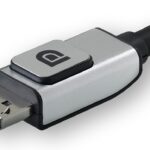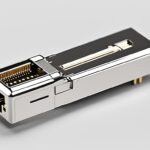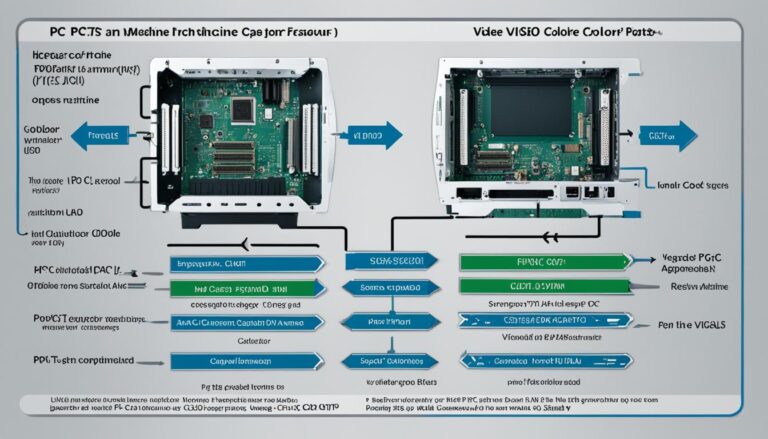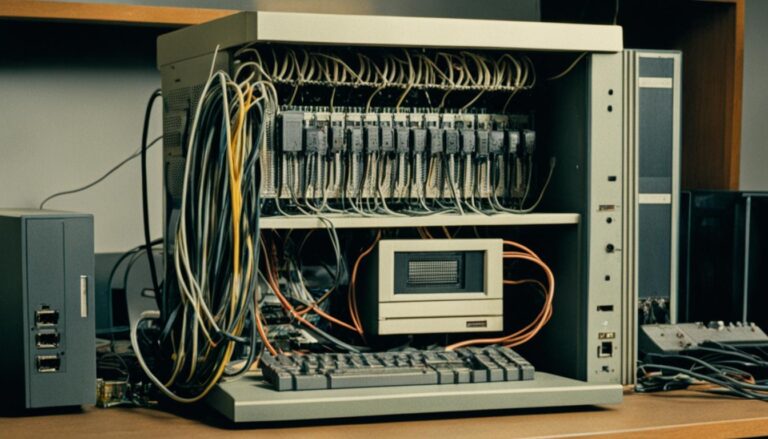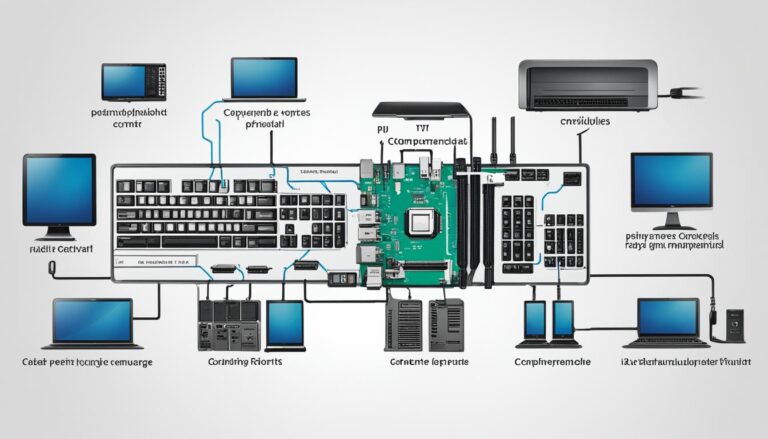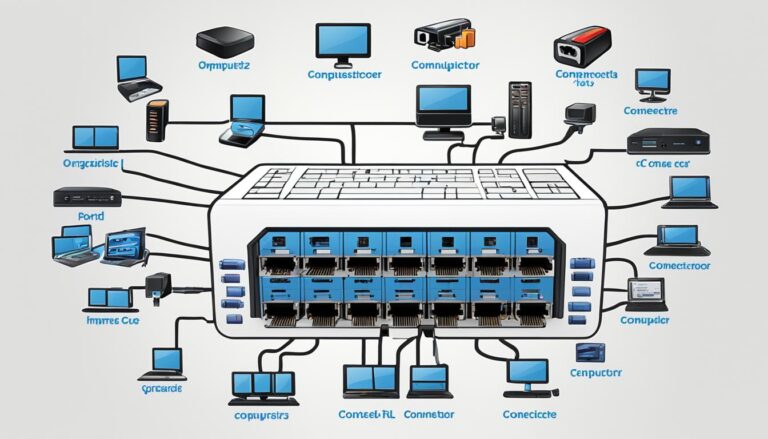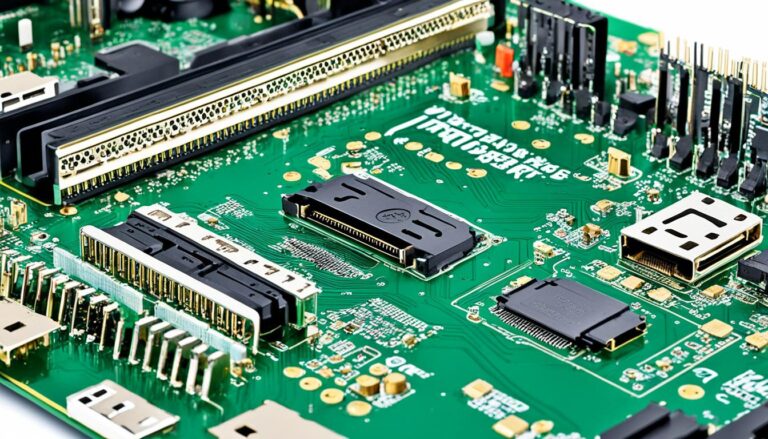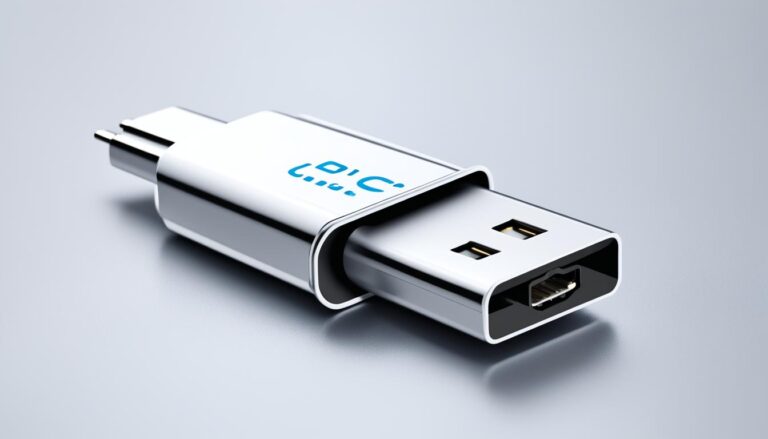Welcome to our visual guide on the DP port! We’re going to explore the DP port, its functions, different versions, connectors, and cables. Ready to learn more?
The DP port, or DisplayPort, is a key digital interface. It connects computers or other devices to monitors. The Video Electronics Standards Association (VESA) created it. It sends high-quality audio and video using packet-based technology.
DisplayPort has cool features like Micro-Packet Architecture and Multi-Stream Transport (MST). It also supports High Bit Rate 3 (HBR3). These features are great for gaming, graphic design, and video editing.
The DP port has evolved over time, introducing new versions with more features. We’ll look at these versions and their benefits.
There are different types of DisplayPort connectors. These include the standard DisplayPort, Mini DisplayPort, and USB Type-C with DisplayPort Alt Mode. We will discuss their pros and compatibility.
We’ll also compare the DP port with HDMI. This comparison will help you choose based on your needs and device compatibility.
Now you know what we’re covering, let’s get into the details. Follow us on this visual journey to learn how the DP port can enhance your display setup!
What is DisplayPort?
DisplayPort is a digital interface for screens. It connects your computer to monitors or projectors. It makes sure you get a clear visual experience.
It uses packet-based data to send audio and video. DisplayPort is better than other interfaces, chosen by many for its performance.
The main link in DisplayPort sends most data. An extra channel sends more info. This setup lets it send top-quality audio and video efficiently.
DisplayPort lets you use Multi-Stream Transport (MST) and High Bit Rate 3 (HBR3). MST connects several displays with one connector. This is perfect for setting up multiple monitors easily.
HBR3 offers more bandwidth for better resolution and refresh rates. It’s great for gamers and designers needing high-quality images and smooth performance.
Let’s see why DisplayPort is a popular choice:
- Multistream Transport (MST): Connects several displays for more productivity.
- High Bit Rate 3 (HBR3): Gives more bandwidth for better visuals.
- Packet-Based Data Transmission: Provides efficient and reliable data transfer.
- Wide Compatibility: Works with many devices like laptops and desktops.
- Superior Image Quality: Delivers great visuals with high resolutions and HDR.
“DisplayPort’s versatility and performance make it an excellent choice for professionals and enthusiasts seeking a digital display interface that meets their demanding visual requirements.”
DisplayPort is key in gaming, workstations, and design studios. It offers amazing visuals, supports advanced features, and ensures a steady connection. It’s vital in modern display tech.
| Advantages of DisplayPort | Disadvantages of DisplayPort |
|---|---|
| Supports high resolutions and refresh rates | Compatibility issues with certain older devices |
| Enables daisy-chaining of multiple displays | Not as widely adopted as HDMI |
| Offers superior image quality and color reproduction | Higher cost compared to some other display interfaces |
| Supports multiple audio channels and advanced audio formats |
DisplayPort excels in performance and functionality. It’s the top choice for those who want superb visuals and smooth connectivity. It’s ideal for gamers, designers, or anyone needing sharp visuals.
Now, let’s look into how DisplayPort operates. We’ll cover its technology for audio and video transmission.
How Does DisplayPort Work?
DisplayPort uses a special method called “Micro-Packet Architecture” to send top-quality audio and video signals. This method sends data in small packets, similar to the Internet. It makes data transmission efficient and improves display quality. DisplayPort has a main link for sending data and an auxiliary channel for extra info.
DisplayPort’s Multi-Stream Transport (MST) feature lets you connect several displays with just one DisplayPort connection. This is great for when you need more screen space or want multiple monitors for games or work.
It also has High Bit Rate 3 (HBR3), boosting bandwidth for better resolution and refresh rates. HBR3 makes 4K and even 8K videos play smoothly with realistic visuals.
“Micro-Packet Architecture enables efficient and high-quality transmission of audio and video signals.”
With its Micro-Packet Architecture, MST, and HBR3, DisplayPort offers an amazing display experience. It boasts excellent resolution, smooth graphics, and boosts productivity. DisplayPort’s advanced tech ensures superb audio and video quality for many uses.
Benefits of DisplayPort:
- Efficient data transmission through Micro-Packet Architecture
- Support for Multi-Stream Transport (MST) for connecting multiple displays
- Increased bandwidth with High Bit Rate 3 (HBR3)
DisplayPort is a dependable and flexible way to connect devices to external displays. It meets the needs of both professional and personal use.
DisplayPort Functionality in Action:
| Feature | Description |
|---|---|
| Micro-Packet Architecture | Enables efficient and high-quality transmission of audio and video signals |
| Multi-Stream Transport (MST) | Allows daisy-chaining of multiple displays through a single DisplayPort connection |
| High Bit Rate 3 (HBR3) | Offers increased bandwidth for higher resolution and refresh rates |
These features make DisplayPort a top choice for professionals in graphic design, video editing, gaming, and more. They need sharp visuals, smooth performance, and better productivity.
What is DisplayPort Used for?
DisplayPort is a digital display interface used widely. It connects laptops, desktops, and workstations to monitors or projectors. This is crucial for gamers and graphic designers. They need high-res displays and smooth graphics for a better experience. DisplayPort is also key in professional video editing for color accuracy and clear images.
DisplayPort offers versatility and high performance. It connects devices to external displays with great quality and efficiency. Thanks to its resolution support and data transmission, it provides a stunning visual experience. This benefits various industries.
For gamers, graphic designers, and professionals, DisplayPort is ideal. It transmits top-quality audio and video. This means clearer audio, more vibrant colors, and smoother motion. With DisplayPort, you get the most out of your devices and displays.
“DisplayPort’s versatility and performance make it a must-have interface for gamers, graphic designers, and professionals in need of exceptional visual experiences.”
In conclusion, DisplayPort is key for connecting devices to external displays. It’s reliable, efficient, and adaptable for different needs. DisplayPort stands as an industry standard. It boosts the quality of visual displays everywhere.
Different Versions of DisplayPort
DisplayPort technology has changed over time, improving how we see and hear digital content. We’ll explore the various versions of DisplayPort and the new features each one introduced.
DisplayPort 1.0
The first version, DisplayPort 1.0, laid the groundwork. It brought us packet-based data transmission and support for audio and video. However, it was limited in resolution and refresh rate.
DisplayPort 1.1
DisplayPort 1.1 improved on these limits. It increased the maximum resolution and refresh rate. This meant clearer displays and smoother graphics.
DisplayPort 1.2
DisplayPort 1.2 was a big leap forward. It supported High Bit Rate 2 (HBR2), allowing for even higher resolutions and refresh rates. This version also introduced Multi-Stream Transport (MST). This meant you could connect multiple displays with just one DisplayPort output.
DisplayPort 1.3
With DisplayPort 1.3, things got even better. Users could now enjoy resolutions up to 8K and higher refresh rates for smoother visuals. It also supported wider color ranges, making images more vibrant and lifelike.
DisplayPort 1.4
DisplayPort 1.4 kept the improvements coming. It introduced Display Stream Compression (DSC). This technology lets us have higher resolutions and refresh rates without losing image quality. It also added support for High Dynamic Range (HDR) content, for more immersive visuals.
DisplayPort 2.0
The latest, DisplayPort 2.0, brings significant advancements. It supports 8K and 16K resolutions and refresh rates up to 240Hz. It also improves power efficiency. With DisplayPort 2.0, visuals are more detailed, and performance is smoother than ever.
DisplayPort 2.1
DisplayPort 2.1 is next in line, building on DisplayPort 2.0’s achievements. While details are still coming, we expect even more improvements. Areas like gaming, virtual reality, and augmented reality will benefit greatly.
To make the most of DisplayPort’s features, ensure your devices support the right versions. This will give you the best performance and let you enjoy the latest in display technology.
| DisplayPort Version | Key Advancements |
|---|---|
| DisplayPort 1.0 | Introduction of packet-based data transmission, audio and video support |
| DisplayPort 1.1 | Increased resolution and refresh rate |
| DisplayPort 1.2 | Support for HBR2, MST for multiple displays |
| DisplayPort 1.3 | Higher resolutions, refresh rates, wider color gamuts |
| DisplayPort 1.4 | DSC for compression, HDR support |
| DisplayPort 2.0 | 8K and 16K resolutions, higher refresh rates, improved power efficiency |
| DisplayPort 2.1 | Upcoming version with further enhancements |
DisplayPort Connectors and Cables
DisplayPort connectors and cables are key for connecting devices to external displays. We’ll look at the options available and their benefits for your display experience.
DisplayPort Connectors
DisplayPort connectors vary in design to meet different needs. The standard DisplayPort connector is the most widely used. It offers a reliable connection and is found on laptops, desktops, and monitors.
“The standard DisplayPort connector is a versatile option that offers a reliable connection for most devices in the market.”
If space is tight, the Mini DisplayPort connector is a great choice. It’s smaller and found on ultrabooks, tablets, and some Mac devices. It delivers high-quality display performance, despite its size.
The USB Type-C with DisplayPort Alt Mode is another good choice. It’s great for modern devices like laptops, tablets, and smartphones. It supports both DisplayPort functionality and USB connectivity, offering easy data transfer and high-resolution display support.
DisplayPort Cables
Choosing the right DisplayPort cable is crucial for the best performance. DisplayPort cables vary in length and specifications, meeting different needs.
It’s important to use certified cables that meet DisplayPort standards. These cables ensure reliable transmission and support the necessary bandwidth for great performance. Uncertified cables can lead to signal loss or poorer display quality.
Think about the cable length you need. DisplayPort cables come in short versions for desktops to longer ones for more flexible setups.
Comparison of DisplayPort Connectors and Cables
| Connector Type | Compatibility | Size | Key Features |
|---|---|---|---|
| Standard DisplayPort | Wide compatibility | Standard size | Reliable connection |
| Mini DisplayPort | Compatible with select devices | Compact size | High-quality display performance |
| USB Type-C with DisplayPort Alt Mode | Modern device compatibility | Compact size | Combined USB and DisplayPort functionality |
To get the best display experience, choose the right DisplayPort connectors and cables. Ensure they are compatible with your device and opt for certified cables. The proper setup will give you stunning visuals and smooth connectivity.
Conclusion
DisplayPort is both flexible and high-performing for linking devices to screens. It’s perfect for gamers, creators, or professionals who need clear visuals. It offers great resolutions, smooth images, and boosts how well you work.
Knowing about its versions, connectors, and cables helps you get the most from DisplayPort. Choosing well ensures great performance and a better viewing experience.
Let DisplayPort transform your screen setup. Its advanced features fit many needs, making it the top choice for top-notch display connections. Use your devices to their fullest and enjoy superior visuals with DisplayPort.
FAQ
What is DisplayPort?
DisplayPort lets you connect computers or devices to external screens, like monitors or projectors. It sends signals for both audio and video. This digital interface uses packages to transfer data.
How does DisplayPort work?
DisplayPort transmits audio and video using “Micro-Packet Architecture”. It has a main link for data and an auxiliary channel for more info. Features like daisy-chaining screens and higher bandwidth are supported.
What is DisplayPort used for?
It’s used in computers to hook up with monitors or projectors. Gamers and graphic designers love it for its crisp displays and smooth visuals. Professionals in video editing also rely on it for color accuracy.
What are the different versions of DisplayPort?
DisplayPort has been updated many times to add new perks and features. It has versions from 1.0 up to 2.1. Each update brings better resolution, refresh rates, and more.
What are the different DisplayPort connectors and cables?
You can find standard DisplayPort, Mini DisplayPort, and USB Type-C with DisplayPort Alt Mode connectors. The type you need depends on your device’s ports. Remember, using certified cables is crucial for the best performance.
Conclusion
Knowing about DisplayPort’s versions, connectors, and cables helps you get the most from your display setup. DisplayPort stands out for its high-quality visual support. It’s perfect for gamers, content creators, and professionals needing sharp visuals.

